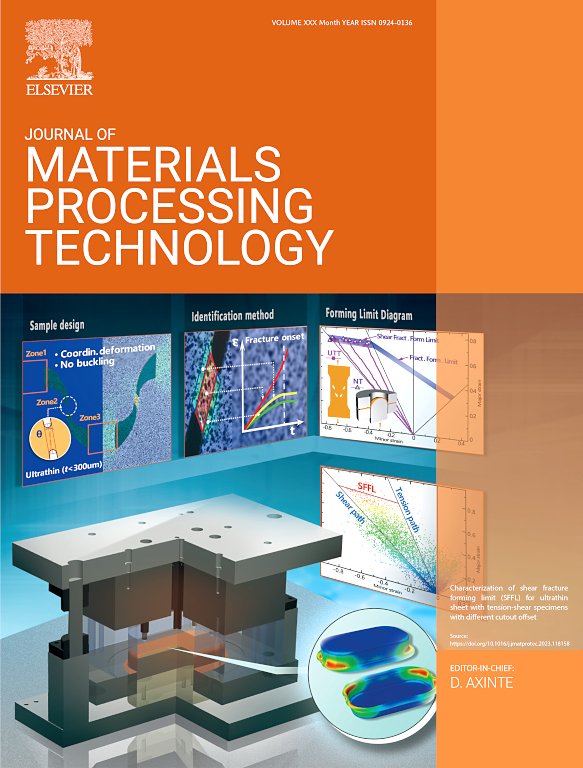Research on wafer-level SiC microgroove array process via integrated molding-etching process
IF 6.7
2区 材料科学
Q1 ENGINEERING, INDUSTRIAL
Journal of Materials Processing Technology
Pub Date : 2024-10-24
DOI:10.1016/j.jmatprotec.2024.118645
引用次数: 0
Abstract
Silicon carbide (SiC) microgroove arrays (MGAs) play a pivotal role as optical components in modern optical engineering. This paper introduces an innovative approach for the fabrication of MGAs on hard materials. This method integrates hot embossing (HE) and inductively coupled plasma (ICP), utilizing polydimethylsiloxane (PDMS) as the intermediary mold due to its excellent demolding performance and shape replication qualities. The process involves transferring the MGAs from the Ni-P master mold to the PDMS mold, followed by replication onto the photoresist surface by hot embossing. Subsequently, the MGAs on the photoresist mask is etched into the hard substrate material using ICP etching. For efficient customization of MGAs, a reliable geometrical model based on angular dependence theory is developed to assist in selecting process parameters and designing masks. The correlation between etching selectivity and characteristic dimension is elucidated. Experimental results demonstrate that the sidewall angle decreases with higher selectivity and increases with a greater sidewall angle on the patterned mask. Plasma etching reveals unaffected areas in convex corners and the forming errors in concave corners, highlighting a high angular dependence of the etch rate. Moreover, minimizing microdefects can be achieved by optimizing process parameters and reducing etch time.
通过集成成型-蚀刻工艺研究晶圆级碳化硅微槽阵列工艺
碳化硅(SiC)微槽阵列(MGA)作为光学元件在现代光学工程中发挥着举足轻重的作用。本文介绍了一种在硬质材料上制造 MGA 的创新方法。该方法整合了热压印(HE)和电感耦合等离子体(ICP),利用聚二甲基硅氧烷(PDMS)的优异脱模性能和形状复制质量作为中间模具。该工艺包括将 MGA 从 Ni-P 母模转移到 PDMS 模具,然后通过热压纹复制到光刻胶表面。随后,使用 ICP 蚀刻技术将光刻胶掩模上的 MGA 蚀刻到硬质基底材料上。为了有效定制 MGA,我们开发了一个基于角度依赖理论的可靠几何模型,以帮助选择工艺参数和设计掩膜。阐明了蚀刻选择性与特征尺寸之间的相关性。实验结果表明,选择性越高,侧壁角越小,图案化掩膜的侧壁角越大,侧壁角越大。等离子刻蚀显示了凸角不受影响的区域和凹角的成型误差,突出了刻蚀速率的高度角度依赖性。此外,通过优化工艺参数和缩短蚀刻时间,可以最大限度地减少微缺陷。
本文章由计算机程序翻译,如有差异,请以英文原文为准。
求助全文
约1分钟内获得全文
求助全文
来源期刊

Journal of Materials Processing Technology
工程技术-材料科学:综合
CiteScore
12.60
自引率
4.80%
发文量
403
审稿时长
29 days
期刊介绍:
The Journal of Materials Processing Technology covers the processing techniques used in manufacturing components from metals and other materials. The journal aims to publish full research papers of original, significant and rigorous work and so to contribute to increased production efficiency and improved component performance.
Areas of interest to the journal include:
• Casting, forming and machining
• Additive processing and joining technologies
• The evolution of material properties under the specific conditions met in manufacturing processes
• Surface engineering when it relates specifically to a manufacturing process
• Design and behavior of equipment and tools.
 求助内容:
求助内容: 应助结果提醒方式:
应助结果提醒方式:


